Ruby vs. Python: Pros, Cons, and Where to Start
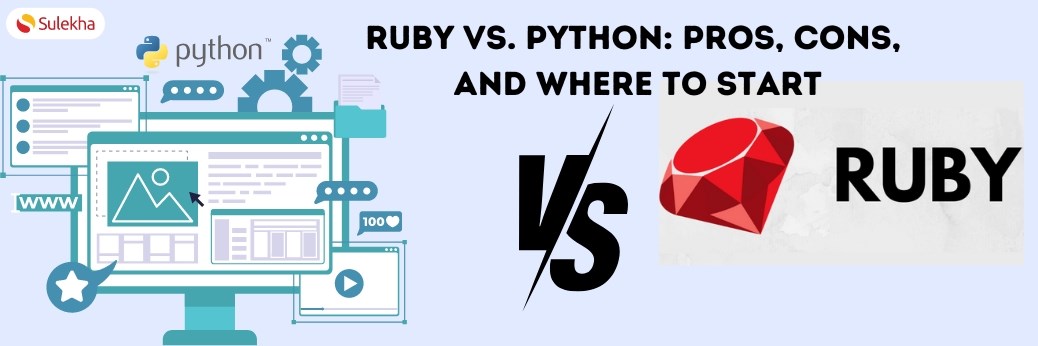
Ruby vs. Python: Pros, Cons, and Where to Start
Learning a programming language is helpful as it opens up numerous career prospects in the ever-growing technology field. Whether it is software development, web development, data science, or artificial intelligence, proficiency in a programming language can lead to various rewarding and in-demand job opportunities.
This blog will discuss Ruby vs. Python: Pros, cons, where to start, and how to choose the best programming language for your project.
Which programming language would be better, Python or R?
- While Python and R powerful tools for data analysis, the best choice depends on your specific needs.
- If your focus lies primarily in statistical analysis and visualization, R excels with its unparalleled statistical depth and ggplot2's exceptional graphics. It offers a tailored data exploration and modelling environment, making it an on-demanding in research and academia.
- On the other hand, Python's versatility shines across diverse domains, from web development to machine learning. Its clear syntax, extensive libraries like NumPy and Pandas, and efficiency in handling large datasets make it well-suited for production environments and large-scale analysis.
- Consider your project's requirements and your team's skills when deciding. For deep statistical exploration and cutting-edge methods, R often reigns supreme. For versatility, production-ready applications, and general-purpose programming, Python frequently takes the lead. Mastering both languages unlocks their complementary strengths and positions you as a well-rounded data professional.
How shall we discuss each of their benefits and advantages in detail?
Ruby
Ruby is a dynamic, object-oriented programming language known for its simplicity and productivity. Created by Yukihiro Matsumoto in the mid-1990s, Ruby was designed to make programming enjoyable and efficient. It features a clean syntax that prioritizes human readability, allowing developers to write code that is both elegant and easy to understand.
Moreover, Ruby is a versatile programming language utilized in various industries for developing web applications, mobile applications, and software solutions. Some industries that commonly utilize Ruby and applications created with Ruby include:
- Technology and software development
- E-commerce and retail
- Healthcare and telemedicine
- Education and e-learning
- Financial services and fintech
- Entertainment and media
- Travel and tourism
- Social networking and communication
- Real estate and property management
- Non-profit and community organizations
Furthermore, there are many applications developed using the Ruby programming language. Some of them include:
Numerous popular applications and platforms have been created using Ruby. Some of the well-known applications developed with Ruby include:
- Ruby on Rails: A popular web application framework written in Ruby, used by companies like Airbnb, GitHub, and Shopify.
- Basecamp: A project management and team collaboration tool developed by 37signals (now known as Basecamp).
- GitHub: A web-based platform for version control and collaboration using Git, primarily built with Ruby.
- Shopify: An e-commerce platform that allows individuals and businesses to create online stores built using Ruby on Rails.
- Airbnb: Airbnb is a well-known online marketplace and hospitality service built using Ruby on Rails.
- Twitch: A popular live streaming platform for gamers, which utilizes Ruby for various parts of its infrastructure.
- Bloomberg: The financial news and data company uses Ruby for various internal applications and tools
Features
- Human-friendly syntax
- Object-oriented everywhere
- Metaprogramming magic
- Convention over configuration
- Web development with Rails
- A thriving community and extensive libraries
- Performance optimizations
Advantages:
Ruby is known for its simplicity and elegance, allowing for rapid development and clean, concise code. It has a strong community and a wealth of libraries and frameworks, such as Ruby on Rails, enabling the creation of powerful web applications. Its flexibility and compatibility with various platforms make it suitable for projects from small scripts to large-scale applications. Ruby's advantages lie in its productivity, maintainability, and strong community support.
Disadvantages:
Some potential disadvantages of Ruby include its slower performance compared to other languages, such as C++ or Java, particularly in high-computation tasks. Ruby's memory consumption can also be higher, which may not be suitable for memory-intensive applications. Another drawback is the lack of strong static typing, which can lead to potential errors that might be caught at compile time in other languages. Furthermore, while Ruby has a strong community, the language's ecosystem may not be as extensive as some other languages, resulting in fewer resources and support for certain niche or specialized areas.
Python:
Python was initially released on February 20, 1991, by Guido van Rossum. As my last knowledge update in January 2022, the latest stable release was 3.13 prerelease 2024-10-01 (planned) 2029-10 PEP 719.
Python is a high-level, versatile programming language known for its simplicity and readability, making it an ideal choice for beginners and experienced developers. It offers various libraries and frameworks, such as Django and Flask, enabling rapid development of web applications, data analysis, and machine learning projects. Python's strong community support and extensive documentation make it easy to find resources and assistance when needed. Its cross-platform compatibility and integration capabilities with other languages make it a popular choice for various applications, from web development to scientific computing.
Using Python in real-life applications
Python is used in many real-life applications, including web development, data analysis, artificial intelligence, scientific computing, and automation. Its versatility and ease of use make it popular for developing practical solutions across various industries.
Various industries utilize Python for developing applications; a few of them include:
- Financial institutions
- Tech companies
- Government agencies
- Education
- Science and Research
- Healthcare
Several popular applications have been built using Python. Some examples include:
- Spotify
- Dropbox
- YouTube
These are just a few examples of the many applications built using Python. Its versatility and extensive libraries make it suitable for various software development projects.
Features
Python is known for its readable syntax and dynamic typing. It supports object-oriented programming and has an extensive standard library. Python's interpreted nature allows for interactive coding and experimentation. Its cross-platform compatibility and active community contribute to its versatility and widespread adoption.
Advantage:
- Readability and Expressiveness: Python's clean syntax enhances code readability, reducing development time and making collaboration more efficient.
- Versatility and Extensive Libraries: A rich standard library and a vast ecosystem of third-party packages empower Python for diverse applications, from web development to data science and machine learning.
- Community Support: Python's large and active community provides ample resources, tutorials, and support, fostering collaboration and problem-solving.
- Cross-Platform Compatibility: Python's ability to run seamlessly on different operating systems enhances portability, allowing developers to write code that works across various platforms.
Disadvantage:
Python's main disadvantages include its slower performance than languages like C++ or Java, particularly in high-computation tasks. Additionally, its global interpreter lock (GIL) can limit the performance of multi-threaded applications. Python's design and dynamic typing can also lead to potential errors that may not be caught until runtime. Furthermore, while Python has a rich set of libraries, its ecosystem may not be as extensive as some other languages, resulting in fewer resources and support for certain niche or specialized areas.
How to step your career path in Python and Ruby
Technical Skills:
Master the Fundamentals:
- Python: Core concepts like object-oriented programming, data structures, and algorithms. Explore specialized areas like data science, web development, and machine learning.
- Ruby: Object-oriented nature, metaprogramming, unique syntax. Hone skills with essential libraries like Rails, RSpec, and Capistrano.
Practice Deeply:
- Python: consider enrolling in Python Online or offline courses. If you want the best training institution, visit Sulekha and choose the best course providers.
- Ruby: Rails proficiency (dominant framework), clean code, and maintainability (community values).
Career Growth:
Build and Showcase:
- Python: Create a portfolio of personal projects showcasing your skills and understanding of specific domains.
- Ruby: Get involved in open-source projects, answer forum questions, and share knowledge at meetups/conferences (community involvement and expertise).
Network and Connect:
- Python: Attend meetups, conferences, and online communities (meet peers, learn, and share knowledge). Connect with professionals in your field and explore career opportunities.
- Ruby: Same as Python, focus on Rails-specific communities and events.
Stay Updated:
- Python: Follow development trends, new libraries, and best practices (blogs, talks, online communities).
- Ruby: Same as Python, emphasize Rails updates and advancements.
Choosing between Ruby and Python depends on your project requirements and personal preferences. For elegant syntax and web development, Ruby might be a good fit. Python's readability, versatility, and extensive community support make it an excellent choice for various applications. Ultimately, consider your goals and the ecosystem that best aligns with your needs.
Find a course provider to learn Python
Java training | J2EE training | J2EE Jboss training | Apache JMeter trainingTake the next step towards your professional goals in Python
Don't hesitate to talk with our course advisor right now
Receive a call
Contact NowMake a call
+1-732-338-7323Take our FREE Skill Assessment Test to discover your strengths and earn a certificate upon completion.
Enroll for the next batch
Python Programming Hands-on Training with Job Placement
- Dec 15 2025
- Online
Python
- Dec 16 2025
- Online
Python Programming Hands-on Training with Job Placement
- Dec 17 2025
- Online
Python
- Dec 18 2025
- Online
Python Programming Hands-on Training with Job Placement
- Dec 19 2025
- Online
Related blogs on Python to learn more
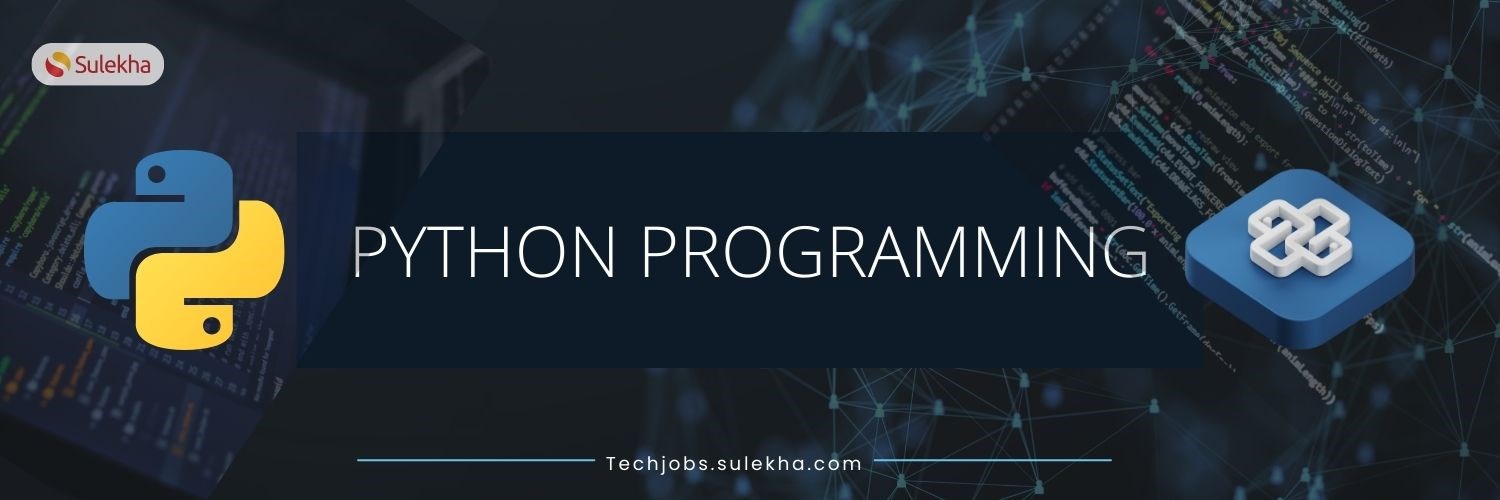
PYTHON PROGRAMMING
Discover Python, a versatile programming language ideal for web development, data analysis, and machine learning. Learn its easy syntax and extensive libraries to unlock a world of career opportunities in tech.

Python: The Language of Innovation and Versatility
"Master Python with Sulekha Tech Courses and boost your tech career. Find expert-led training in the USA and Canada for roles like Data Scientist and Machine Learning Engineer, and start your journey to innovation today."
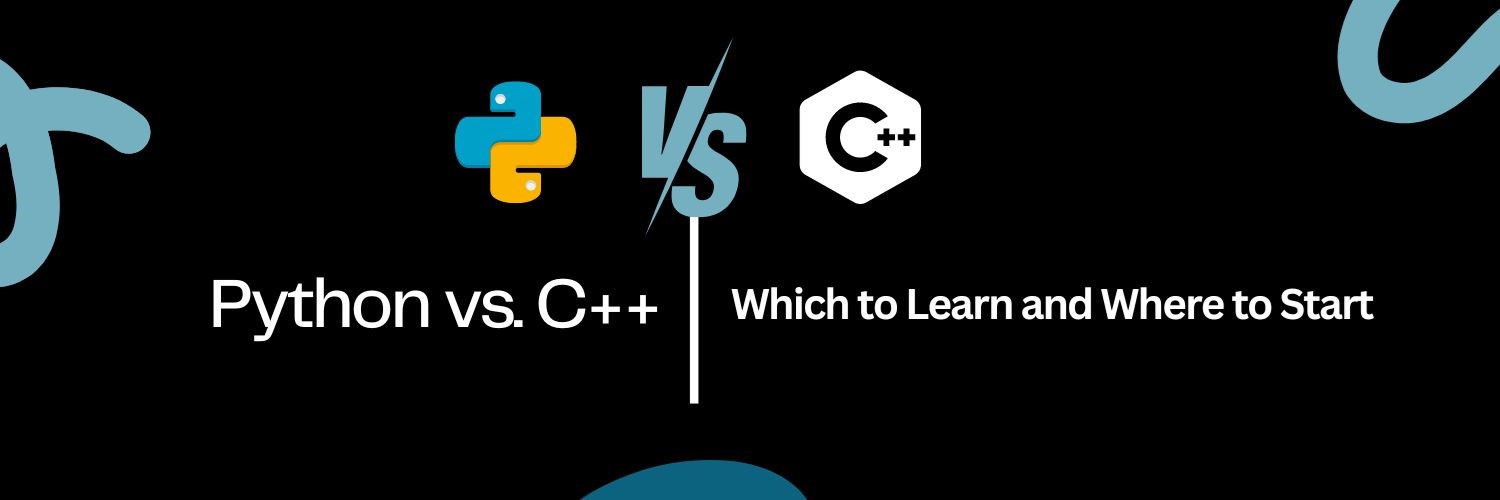
Python vs. C++: Which to Learn and Where to Start
Compare Python and C++ programming languages, learn which language is best for your needs and where to start your programming journey, with tips on getting started and resources for further learning.

Top 8 DevOps Programming Languages That You Must Know
Top 8 DevOps programming languages that every DevOps engineer should know. From Python to PHP, learn the essential skills for automating and streamlining software delivery."
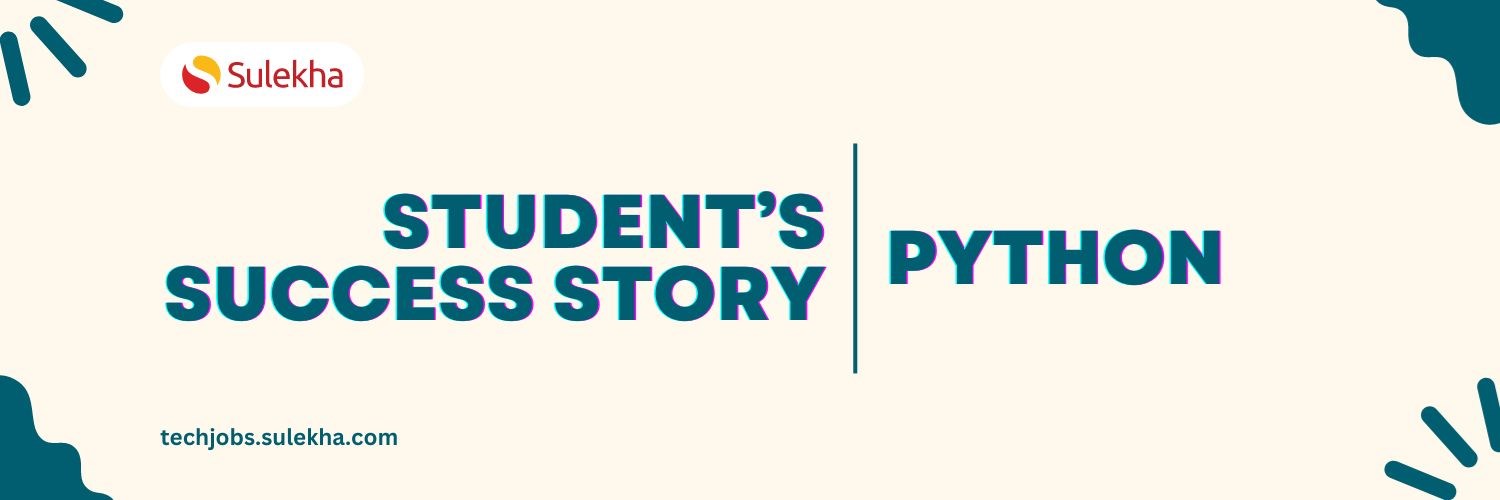
How did I successfully complete Python course?
Embark on a journey of student’s success story in Python programming, uncovering stories of resilience, growth, and achievement. Be inspired by their transformative experiences, unwavering dedication, and remarkable successes in mastering Python and
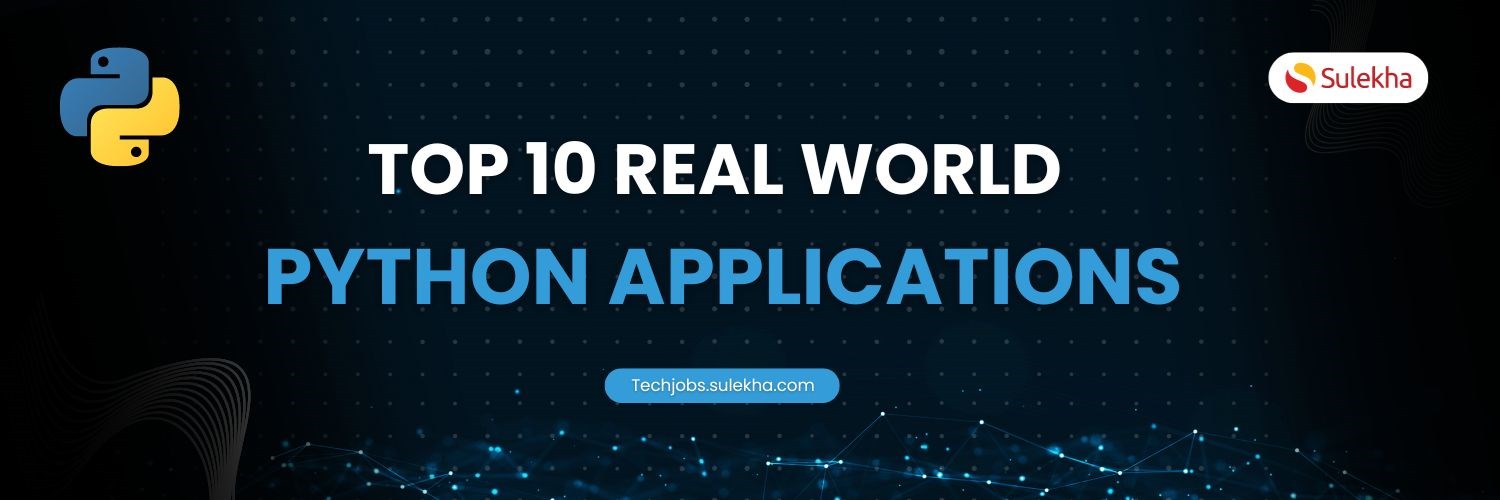
What are the top 10 Python Applications in the Real World?
Discover the top 10 Python applications transforming the real world across web development, audio and video Applications, business applications data science, game development, and more.
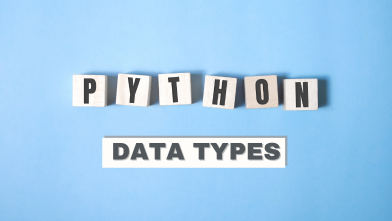
Data Types in Python for Data Science Applications
Python is a multipurpose programming language that finds applications across various domains. Its simplicity and flexibility make it a popular choice for web development, where frameworks like Django and Flask enable the creation of dynamic websites.
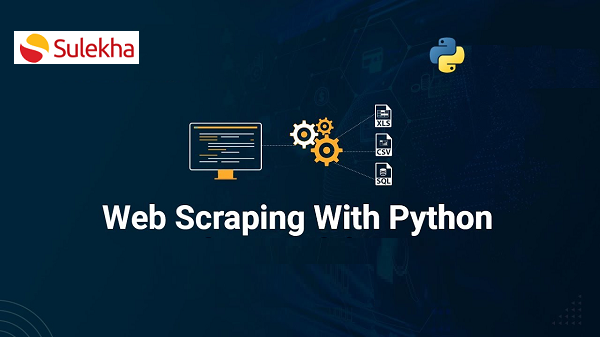
How to Build a Data Web Scraper Tool with Python
Web scraping involves processes to extract data from websites. This process is often performed using software that can simulate a user's actions on a website.
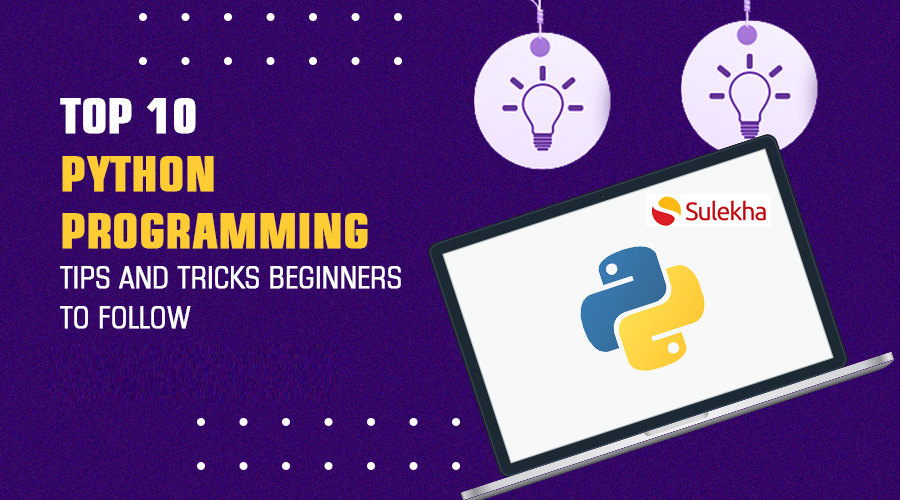
10 Python Tips and Tricks for Efficient Coding
Introduction
Latest blogs on technology to explore

From Student to AI Pro: What Does Prompt Engineering Entail and How Do You Start?
Explore the growing field of prompt engineering, a vital skill for AI enthusiasts. Learn how to craft optimized prompts for tools like ChatGPT and Gemini, and discover the career opportunities and skills needed to succeed in this fast-evolving indust

How Security Classification Guides Strengthen Data Protection in Modern Cybersecurity
A Security Classification Guide (SCG) defines data protection standards, ensuring sensitive information is handled securely across all levels. By outlining confidentiality, access controls, and declassification procedures, SCGs strengthen cybersecuri

Artificial Intelligence – A Growing Field of Study for Modern Learners
Artificial Intelligence is becoming a top study choice due to high job demand and future scope. This blog explains key subjects, career opportunities, and a simple AI study roadmap to help beginners start learning and build a strong career in the AI

Java in 2026: Why This ‘Old’ Language Is Still Your Golden Ticket to a Tech Career (And Where to Learn It!
Think Java is old news? Think again! 90% of Fortune 500 companies (yes, including Google, Amazon, and Netflix) run on Java (Oracle, 2025). From Android apps to banking systems, Java is the backbone of tech—and Sulekha IT Services is your fast track t

From Student to AI Pro: What Does Prompt Engineering Entail and How Do You Start?
Learn what prompt engineering is, why it matters, and how students and professionals can start mastering AI tools like ChatGPT, Gemini, and Copilot.

Cyber Security in 2025: The Golden Ticket to a Future-Proof Career
Cyber security jobs are growing 35% faster than any other tech field (U.S. Bureau of Labor Statistics, 2024)—and the average salary is $100,000+ per year! In a world where data breaches cost businesses $4.45 million on average (IBM, 2024), cyber secu

SAP SD in 2025: Your Ticket to a High-Flying IT Career
In the fast-paced world of IT and enterprise software, SAP SD (Sales and Distribution) is the secret sauce that keeps businesses running smoothly. Whether it’s managing customer orders, pricing, shipping, or billing, SAP SD is the backbone of sales o

SAP FICO in 2025: Salary, Jobs & How to Get Certified
AP FICO professionals earn $90,000–$130,000/year in the USA and Canada—and demand is skyrocketing! If you’re eyeing a future-proof IT career, SAP FICO (Financial Accounting & Controlling) is your golden ticket. But where do you start? Sulekha IT Serv

Train Like an AI Engineer: The Smartest Career Move You’ll Make This Year!
Why AI Engineering Is the Hottest Skillset Right Now From self-driving cars to chatbots that sound eerily human, Artificial Intelligence is no longer science fiction — it’s the backbone of modern tech. And guess what? Companies across the USA and Can

Confidence Intervals & Hypothesis Tests: The Data Science Path to Generalization
Learn how confidence intervals and hypothesis tests turn sample data into reliable population insights in data science. Understand CLT, p-values, and significance to generalize results, quantify uncertainty, and make evidence-based decisions.